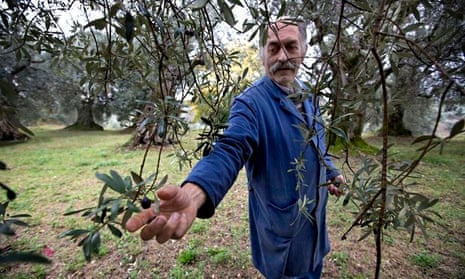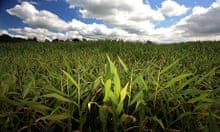Forget scouring the January sales for clothes and electrical goods and cheap Christmas wrapping paper for next year – the thing to be stocking up on this month is olive oil.
A dreadful 12 months for olives in several major producing countries has led to 2014 being labelled the “black year” for the industry and to the doubling of the bulk cost of olive oil in some areas.
Unusual weather and a proliferation of insects and bacterial blight have devastated the harvest in several countries. Analysts have been predicting a bad year for olive oil since the summer, after it became clear that hot late spring weather in Spain – the world’s largest producer of olives – was going to have a key impact on autumn harvests. Other producers have been coming in with equally poor results, adding to the woes of the industry Europe-wide.
Farmers in Italy have suffered so badly from pests and adverse weather that many are reporting harvests 40% to 50% down on 2013. Unusually large flocks of starlings have been reported as further destroying the fruits in parts of southern Italy, leading to calls for a cull.
“This is the worst year in memory,” said Pietro Sandali, head of the Italian olive growers consortium, Unaprol.
In Greece, the olive output has been more stable, but the other smaller producing countries cannot pick up the strain: Morocco and Tunisia have also suffered bad weather, while Syria, which claims to be the birthplace of the olive tree and which has 74 million trees, has been affected by the civil war.
The International Olive Council (IOC) says production will hit its lowest level in 15 years and admits there will be an upswing in prices; its latest figures show the price from the producers had risen by 121% in the last month of 2014 compared with December 2013, with supply down by almost a third. That increase, the experts say, is likely to be passed on at the supermarkets, meaning a bottle of olive oil is likely to cost British shoppers more than a high-end bottle of wine.
Ever since the first bulbs of garlic began to appear in British kitchens in the 1970s, the Mediterranean diet has been so wholeheartedly adopted here that its ingredients have become commonplace. Now a price hike in a bottle of olive oil could make a luxury out of a staple.
The Italian Olive Oil Company in Hever, Kent, says it is already warning customers that its supplies will be limited. Olive farmers with low harvests are inclined to go for quantity over quality and do fewer of the initial virgin pressings so beloved of foodies in Britain.
But worst hit will be the farmers and the economies of the olive oil-producing countries, all of which are still struggling to emerge from several years of dire economic straits. The olive oil industry is worth more than £2bn to southern European producers.
Curtis Cord, publisher of the Olive Oil Times, has called the situation “particularly painful”, adding that millions of people rely on the industry in Spain, Italy, Greece, Portugal, Morocco and Tunisia. “This has a profound, profound effect on families and producers in these regions, so it is a crisis,” he said. “That’s one of the unfortunate parts of producing olives and olive oil. It’s cyclical: you’re going to have bad years and good years.”
Spain and Italy account for just under 70% of output, and the Madrid-based IOC, which publishes benchmark supply and demand estimates, forecasts that Spanish olive oil production will more than halve next year, to 825,700 tonnes. Production in Italy is expected to fall about a third to 302,500 tonnes, the lowest level since 1991.
Olive oil comes in so many different types and qualities of pressings that it is difficult to compare prices, but broadly it varies from around £4 a litre in Aldi to £6.50 at Waitrose.
However, Europe, where two-thirds of the world’s olive oil supply is consumed, will have cheaper alternatives. Favourable weather elsewhere in the world has meant that harvests of oilseed crops have been plentiful and prices have been falling. The future could also see olive oil coming from the US, where more and more landowners in the increasingly climatically challenged states of California and Texas are planting olive trees.
To add insult to culinary injury for Britain’s salad lovers, the drought in Spain is also likely to see fewer tomatoes and lettuces available to us.





Comments (…)
Sign in or create your Guardian account to join the discussion